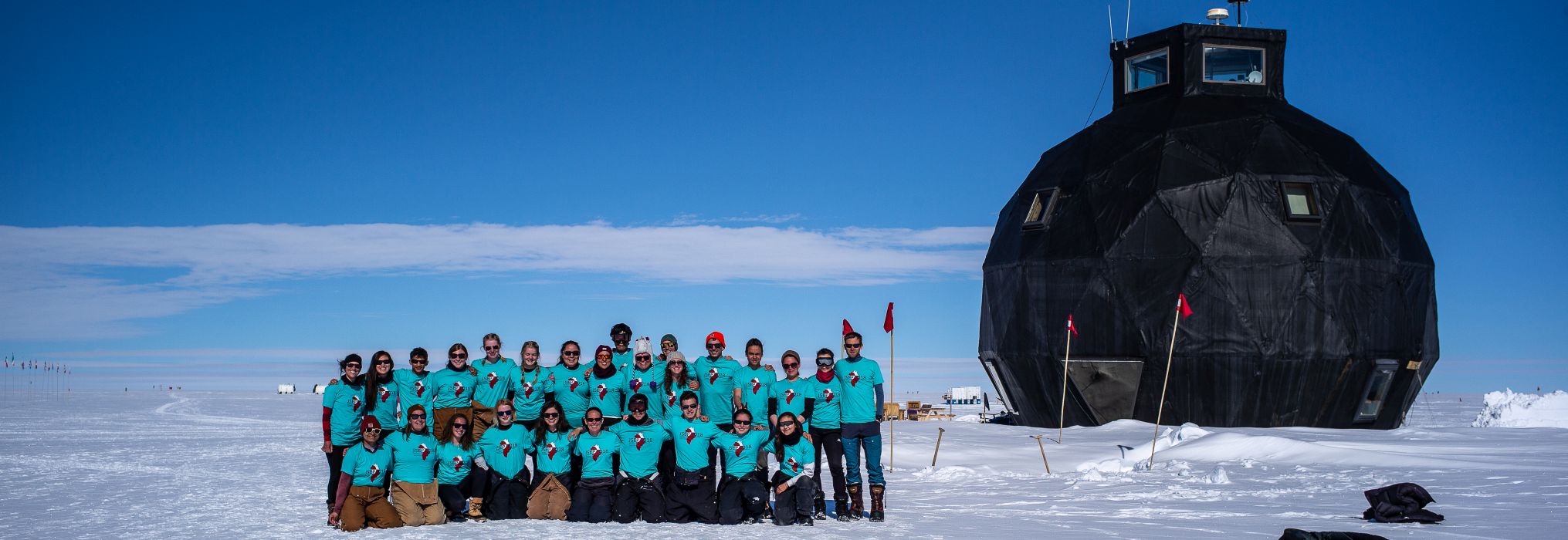
Group photo of the JSEP crew on snow enjoying the beautiful weather here at EGRIP (photo: Lars Demant-Poort).
July 16, 2018

Group photo of the JSEP crew on snow enjoying the beautiful weather here at EGRIP (photo: Lars Demant-Poort).
Thanks to the JSEP group, the EGRIP camp is now buzzing with activity both below surface and on the surface. Today the JSEP high schoolers from Greenland, Denmark and the US made a double sided snow pit, did albedo measurements at various locations around camp, and measured the snow density at different depths. In the evening there was even time for having fun with a Frisbee in the calm weather outside – together with EGRIP crew members. All in camp are impressed by how well the JSEP group is dealing with the high elevation, and all the different oddities that goes with sleeping in a tent in a remote field location on the Greenland ice sheet – cool guests indeed!
In the EGRIP drill trench, the drillers are getting closer to getting into a routine using the setup and electronics used for the NEEM drilling. Today some 19 m of cores was produced in 6 runs, and the night time filtering team retrieved 44 kg of chips. We all hope that this mode of operation will prove stable in the coming days. The crews in the processing line the isotope CFA lab. and the Physical Properties labs. all continued making good progress during the day, cutting and measuring samples at a steady pace. The processing line and the physical properties crew made it through the brittle section we selected for processing a few days ago and how now gone back to process ice from the Last Glacial Maximum (LGM) recently retrieved by the drillers. CFA isotope measurements are still carried out on ice from the early part of the Holocene.
What we did today:
Ad 1: Drillers report for the period 8/7 to 16/7: Both working EGRIP electronic sections failed. One due to component failure in the power circuit, probably because of high strain, and another due to a leak caused by a missing ventilation screw, allowing drill fluid to enter the electronic section. The drilling was under a brief halt, while the electronic section was changed to the NEEM electronics. Drilling continued hereafter, with the same stable configuration as established from previous weeks of experimenting. Running step cutters with a relative low pitch between 1,5 - 2,2mm. Thus far the NEEM electronics prove to be more robust, but lacking a bit power compared to the EGRIP electronics, where cutting pitches of above 2mm have been tested succesfull. Drilling will continue with the NEEM electronics, until a redundance in the EGRIP equipment have been established, and will be exchanged if extra power is desired. Chips loss still seem to plague the operation, which is why we still filter the borehole during night, this is done by 2 people whom make up a seperate filter team. Drilling progress 8/7 to 16/7: 71m
Weather: Mostly sunny with no or very little wind from various directions., improving and gradually getting more sunny Sunday. Temperature -18 °C to -2 °C.
FL, Bo Vinther